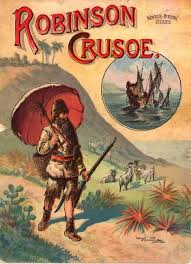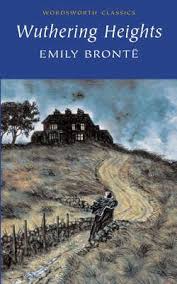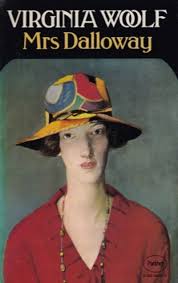 I think a case can be made for ‘Jane Eyre’ as the definitive nineteenth century novel. It has it all:
I think a case can be made for ‘Jane Eyre’ as the definitive nineteenth century novel. It has it all:
Romance – the scene in chapter 22 when Rochester teasingly proposes to Jane, and she slowly comes to realise he is serious, is as touching and effective as anything in Austen, and the final reconciliation in Ferndean House between Jane and the blinded Rochester would bring a tear to the eye of the hardest heart (but perhaps not St John Rivers);
Drama – spooky scenes in the middle of the night, the “I object” scene at the wedding, parties, house fires, tragic deaths and maiming, ‘Jane Eyre’ has pretty much got it all – although the only issue I have with the novel the extent to which it occasionally teeters into melodrama….
The supernatural – Jasper Fforde in the brilliant ‘The Eyre Affair’ has great fun with the ‘cosmic telephone’ that Rochester uses to communicate with Jane, but the novel just about gets away with this piece of nonsense without seeming too absurd;
Gothic elements – the spooky house, the mad woman in the attic, possession and long lost relatives appearing at inopportune moments;
Social commentary – education, the slave trade (tangentially), the condition of the poor; the emancipation of women;
Pathetic fallacy – after Rochester’s proposal the storm blows fiercely, the trees “writhed and groaned”, and thunder and lightening provide an ominous backdrop to the engagement;
A heroine to admire, with courage, principles, and determination, and a hero with a square jaw, deep-running passions, and a vulnerable side.
The novel is written in autobiographical form, and follows the eponymous heroine in five distinct phases of her life. An orphan, she is brought up by her abusive aunt, Mrs Reed. At the age of ten she is sent to a horrific boarding school, Lowood Grange, where she is lucky to survive. At eighteen she leaves Lowood to work at Thornfield Hall as a governess for Adele, the ward of the mysterious Mr Rochester. Running away from Thornfield to escape Rochester, who wants to marry her, but unfortunately already has a wife, albeit one who is mad and ineffectually imprisoned in his attic, Jane escapes to another secure refuge, Moor House, where she is taken in by St John Rivers and his sisters. Finally, Jane is reunited with the widowed but maimed Rochester at his back-up house, Ferndean, and “reader, I married him”.
At the heart of the novel is the relationship between the not-yet twenty governess Jane, and the almost twice her age Mr Rochester. They first meet in Chapter 12, when he falls from his horse. Despite struggling to help himself, he eventually has to rely on Jane for support: “I must beg of you to come here.” I came. “Excuse me,” he continued: “necessity compels me to make you useful.” He laid a heavy hand on my shoulder, and leaning on me with some stress, limped to his horse. Having once caught the bridle, he mastered it directly and sprang to his saddle; grimacing grimly as he made the effort, for it wrenched his sprain.” This incident, and in particular Rochester’s temporary disability, and his dependence on Jane, is not important for the plot, but it foreshadows the events later in the novel, first when Jane rescues him from his burning bed, and later when he is seriously injured, and depends on Jane more comprehensively.
Jane enjoys being helpful in this way, although it helps her calmness at their first meeting that Rochester is not particularly good looking:
“I traced the general points of middle height and considerable breadth of chest. He had a dark face, with stern features and a heavy brow; his eyes and gathered eyebrows looked ireful and thwarted just now; he was past youth, but had not reached middle-age; perhaps he might be thirty-five. I felt no fear of him, and but little shyness. Had he been a handsome, heroic-looking young gentleman, I should not have dared to stand thus questioning him against his will, and offering my services unasked”.
Their first conversation at Thornfield Hall is a little more relaxed, and although it largely takes the form of a cross-examination, it eventually warms to something closer to flirtation:
‘“Adele showed me some sketches this morning, which she said were yours. I don’t know whether they were entirely of your doing; probably a master aided you?” “No, indeed!” I interjected.
“Ah! that pricks pride. Well, fetch me your portfolio, if you can vouch for its contents being original; but don’t pass your word unless you are certain: I can recognise patchwork.”
“Then I will say nothing, and you shall judge for yourself, sir.”…..
He deliberately scrutinised each sketch and painting. Three he laid aside; the others, when he had examined them, he swept from him. “Take them off to the other table, Mrs. Fairfax,” said he, and look at them with Adele;–you” (glancing at me) “resume your seat, and answer my questions. I perceive those pictures were done by one hand: was that hand yours?”
“Yes.”. “And when did you find time to do them? They have taken much time, and some thought.”
“I did them in the last two vacations I spent at Lowood, when I had no other occupation.”
“Where did you get your copies?” “Out of my head.”
“That head I see now on your shoulders?” “Yes, sir.”
“Has it other furniture of the same kind within?” “I should think it may have: I should hope–better.”
From this point conversations between Jane and Mr Rochester habitually adopt this teasing tone. Rochester clearly enjoys being stood up to by Jane, in contrast with the simpering women he is apparently used to. He constantly refers to Jane as something otherworldly – elf, fairy, sprite, and asks her for a spell to make him “a handsome man”. This playfulness continues to the end of the novel:
“Am I hideous, Jane?”
“Very, sir: you always were, you know”
Jane’s gradual awareness of her feelings for Rochester, and her delight at coming to understand that her love is reciprocated, is done with a wonderful tenderness and lightness of touch.
This wouldn’t be an honest review if I did not mention the few reservations I have about the novel. At times it can be over-written, and some of the foreshadowing – constant references to fire, furnaces, burning etc for example – is heavy-handed. Mr Rochester’s behaviour, in retrospect, is absurd – he freely tells Jane about Adele’s illegitimacy and his affair with her mother, but hides the existence of his wife even when the evidence becomes overwhelming. The excuse offered for this – that knowledge of a madwoman in the house might deter prospective governesses from applying to look after Adele – doesn’t stand much scrutiny, when the resolution, to send her away to school, is readily at hand. The novel carries this all off with style – the romance at the heart of the novel is really all that matters, and that is done superbly.
‘Jane Eyre’ is much-loved, and understandably so. It is in the select group of novels one closes at the end with a satisfying sigh and is put somewhere safe in confident expectation of taking up again sometime soon.



 language Delillo uses is fractured and often very poetic; his characters usually speak in incomplete sentences, and there is often no indication who is speaking. The time structure of the novel is equally fragmented, and the jumps in time are mirrored by jumps around the globe. This all adds up to a challenging novel, from many different aspects – but the question is, was it worth it?
language Delillo uses is fractured and often very poetic; his characters usually speak in incomplete sentences, and there is often no indication who is speaking. The time structure of the novel is equally fragmented, and the jumps in time are mirrored by jumps around the globe. This all adds up to a challenging novel, from many different aspects – but the question is, was it worth it? 

